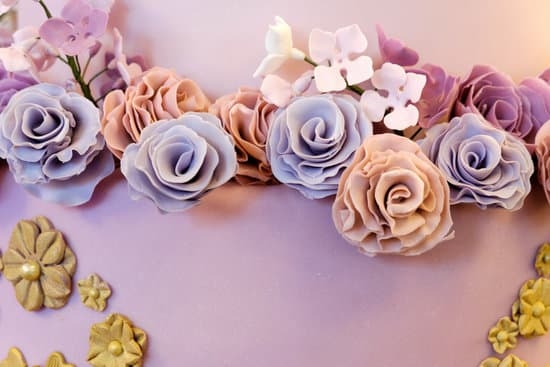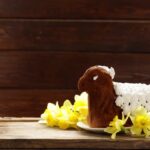What is the best type of icing for cake decorating? The choice of icing plays a crucial role in determining the outcome of your cake masterpiece. From buttercream to royal icing, fondant to cream cheese frosting, each type offers distinct qualities that cater to different decorating needs. Understanding the importance of selecting the right icing can elevate your cake decorating skills and bring your creations to life.
When it comes to cake decorating, the right icing can make all the difference. Buttercream icing, known for its classic appeal and versatility, is a popular choice for many decorators due to its ease of use and ability to be flavored and colored in various ways. On the other hand, royal icing offers a firm and smooth texture that makes it ideal for intricate designs and piping work on cakes.
Each type of icing brings its own unique characteristics to the table, from fondant’s smooth finish that gives cakes a professional look to cream cheese frosting’s tangy flavor that pairs perfectly with certain cake flavors. Ganache adds a touch of luxury with its rich and glossy appearance, while whipped cream provides a light and airy finish for those looking for a delicate touch on their cakes.
By understanding the differences between these icings, decorators can choose the best option based on their specific preferences and needs.
Buttercream Icing
One of the key advantages of buttercream icing is its flexibility when it comes to flavorings and colors. Whether you prefer a traditional vanilla buttercream or want to experiment with unique additions like citrus zest or cocoa powder, buttercream icing can easily be customized to suit your taste preferences.
Additionally, buttercream can be tinted with food coloring to create vibrant hues for festive occasions like holidays or themed parties. Its smooth consistency also makes it ideal for piping intricate designs, rosettes, or borders on cakes, allowing for endless creativity in cake decorating.
Despite its popularity and ease of use, there are some considerations to keep in mind when working with buttercream icing. Because it contains butter as a primary ingredient, buttercream is sensitive to temperature changes and can melt or become too soft in warm environments.
To avoid potential issues with melting or drooping decorations, it’s important to store cakes frosted with buttercream in a cool place until serving time. Overall, when considering what is the best type of icing for cake decorating, buttercream stands out as a reliable choice that delivers both aesthetically pleasing results and delicious flavor profiles.
Royal Icing
One of the key advantages of royal icing is its ability to set and harden quickly, allowing decorators to layer designs without smudging or blending colors. This makes it a popular choice for decorating cookies, gingerbread houses, and wedding cakes where precise detailing is essential. Additionally, royal icing can be colored with gel food coloring to achieve vibrant hues that remain true once dried.
Despite its versatility and aesthetic appeal, royal icing does have some limitations. It can be prone to cracking if applied too thickly or exposed to high humidity, so decorators need to work efficiently when using this type of icing. Some bakers also find royal icing too sweet for their taste, as it typically contains a significant amount of sugar. However, with proper technique and practice, royal icing can elevate cake decorating projects with its polished look and intricate designs.
| Advantages | Limitations |
|---|---|
| Dries hard for detailed decorations | Proneness to cracking in humid conditions |
| Quick setting time for layering designs | Sweet taste might not appeal to everyone |
Fondant
One of the key advantages of using fondant is its versatility when it comes to decorating cakes. Fondant can be shaped into intricate designs, molded into figures or flowers, and dyed in various colors to suit any theme or style. Its smooth surface also provides an ideal canvas for painting details or adding edible embellishments like pearls or luster dust. For those looking to create a show-stopping centerpiece with their cake, fondant offers endless possibilities for creativity.
Despite its visual appeal and flexibility in design, fondant does have some drawbacks that may deter certain bakers. Some people find the taste of fondant too sweet or artificial compared to other types of icing.
Additionally, working with fondant requires some skill and practice to achieve a seamless finish without creases or air bubbles on the cake’s surface. However, with the right techniques and tools, mastering the art of fondant decoration can elevate any homemade or professionally-made cake to new heights of sophistication.
| Advantages | Drawbacks |
|---|---|
| Versatile for intricate designs | Sweet taste may not be appealing to all |
| Smooth surface allows for creative decorations | Requires practice for seamless application |
Cream Cheese Frosting
When considering what is the best type of icing for cake decorating, cream cheese frosting stands out for its rich and indulgent taste. Made with cream cheese, butter, powdered sugar, and sometimes a hint of vanilla extract, this icing has a luxurious feel that complements a wide range of cake varieties. The creamy consistency allows for easy piping and decorating techniques, adding both flavor and visual appeal to baked goods.
To achieve the perfect cream cheese frosting consistency, it is essential to use room temperature ingredients and to beat the mixture until smooth and fluffy. Additionally, incorporating additional flavors like citrus zest or spices can enhance the overall taste profile of the icing. Whether you are looking to create a classic red velvet cake or a unique carrot cake creation, cream cheese frosting can be the perfect finishing touch that elevates your dessert to new heights.
- Creamy texture
- Rich taste
- Ideal for red velvet or carrot cakes
Ganache
Uses of Ganache in Cake Decorating
One of the main reasons why ganache is so beloved in the world of cake decorating is its ability to create a smooth and shiny finish on cakes. Whether you are looking to glaze a cake, cover it completely, or use it as a filling between cake layers, ganache provides a luxurious touch that adds elegance to any dessert.
Additionally, ganache can also be whipped to create a lighter texture for frosting cakes, making it a versatile option for different decorating techniques.
Pros and Cons of Using Ganache
One of the main advantages of using ganache for cake decorating is its delicious flavor profile. The combination of chocolate and cream creates a rich and satisfying taste that complements various cake flavors. Furthermore, ganache sets up firm after being chilled, ensuring that your decorations will hold their shape without melting or losing definition.
However, one drawback of using ganache is that it can be more challenging to work with than other icings due to its temperature sensitivity. Ensuring that the ganache reaches the right consistency is crucial for achieving the desired results in cake decorating.
Overall, choosing the best type of icing for cake decorating ultimately comes down to personal preference and specific needs. Ganache provides a luxurious touch with its rich flavor and glossy finish, making it an excellent choice for those looking to elevate their cakes with sophistication and style. Whether you are creating intricate designs or simply aiming for a smooth finish, ganache offers versatility and decadence that can enhance any dessert creation.
Whipped Cream
Pros of Whipped Cream Icing
One of the main benefits of using whipped cream icing is its light and airy texture, which pairs well with lighter cake flavors such as angel food or sponge cake. Whipped cream also provides a refreshing contrast to rich and decadent desserts, balancing out the sweetness with its subtle flavor. Additionally, whipped cream can easily be colored or flavored to suit different occasions or themes, making it a versatile option for cake decorators.
Cons of Whipped Cream Icing
While whipped cream icing is delicious and light, it does have some drawbacks compared to other types of icing. One challenge with using whipped cream is its stability, as it tends to deflate and lose its structure over time. This makes whipped cream less ideal for intricate designs or decorations that require long-lasting stability. Additionally, whipped cream should be stored in the refrigerator and used shortly before serving to maintain its texture and prevent it from melting.
Comparing Different Icings
When it comes to cake decorating, choosing the right type of icing is crucial. Each icing has its own unique qualities that can greatly influence the final look and taste of your cake. Let’s compare some popular options to help you decide what is the best type of icing for your next cake project.
Buttercream icing is a classic choice loved for its creamy texture and versatility. It can be easily flavored and colored, making it ideal for various cake designs and flavor combinations. However, buttercream can be prone to melting in warm temperatures, which may not be ideal for outdoor events or hot climates.
On the other hand, royal icing is known for its firm and smooth consistency, perfect for intricate piping work and creating detailed designs on cakes. It hardens quickly, making it great for decorations that need to hold their shape. The downside is that royal icing tends to dry out rapidly, so working quickly is essential when using this type of icing.
Fondant has become increasingly popular for its ability to create smooth, professional-looking finishes on cakes. It provides a blank canvas for elaborate decorations and allows for sculpting and shaping into various designs. However, some people find fondant too sweet or dislike its chewy texture. Understanding the pros and cons of each type of icing will help you make an informed decision based on your preferences and needs when decorating cakes.
Tips for Choosing the Right Icing
When it comes to cake decorating, choosing the right type of icing is crucial to achieving the desired look and taste for your creation. With so many options available, it can be overwhelming to decide which icing will work best for your specific needs. Each type of icing has its own unique characteristics and advantages, catering to different preferences and requirements.
Buttercream icing is a classic and versatile option that is favored by many decorators for its smooth texture and easy application. On the other hand, royal icing is ideal for creating intricate designs due to its firm consistency. Fondant offers a sleek and professional finish, making it perfect for special occasions like weddings.
Cream cheese frosting provides a tangy flavor profile that pairs well with certain cake flavors, while ganache adds a rich and luxurious touch to any dessert. Whipped cream, on the other hand, offers a light and airy finish that complements delicate cake creations.
In conclusion, the best type of icing for cake decorating ultimately depends on your preferences and needs. Consider factors such as taste, texture, design capabilities, and overall presentation when choosing the right icing for your masterpiece.
Experimenting with different types of icing can help you discover which works best for your unique style and vision. So whether you opt for buttercream, royal icing, fondant, cream cheese frosting, ganache, or whipped cream – remember to select the one that will enhance the beauty and flavor of your cake creation.
Frequently Asked Questions
What Frosting Do Professionals Use?
Professionals often use Swiss meringue buttercream or Italian meringue buttercream as their go-to frostings due to their smooth texture and ability to hold intricate designs. These frostings are versatile and lend themselves well to various cake decorating techniques.
What Is the Best Icing to Use for Decorating Cakes?
When it comes to decorating cakes, the best icing to use is typically royal icing or fondant. Royal icing dries hard, making it perfect for intricate piping work and creating details on cakes. Fondant, on the other hand, provides a smooth canvas for decorating with embellishments like flowers or sculptures.
What Is the Best Icing to Practice Cake Decorating?
For beginners looking to practice cake decorating, buttercream frosting is often recommended as the best icing choice. Buttercream is forgiving and easy to work with, allowing beginners to experiment with different techniques like piping borders, rosettes, or simple designs. Plus, it tastes delicious and can be easily colored to match any cake design.

Welcome to our cake decorating blog! My name is Destiny Flores, and I am the proud owner of a cake decorating business named Cake Karma. Our mission is to provide delicious, beautiful cakes for all occasions. We specialize in creating custom cakes that are tailored specifically to each customer’s individual needs and tastes.





